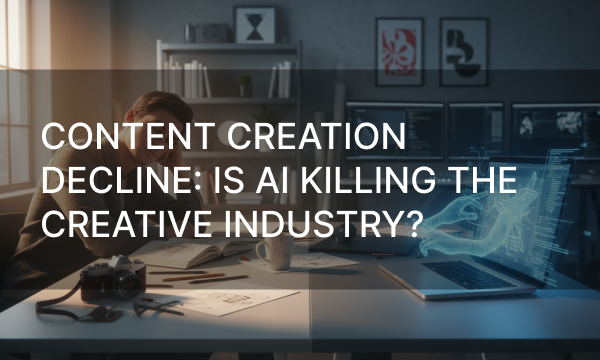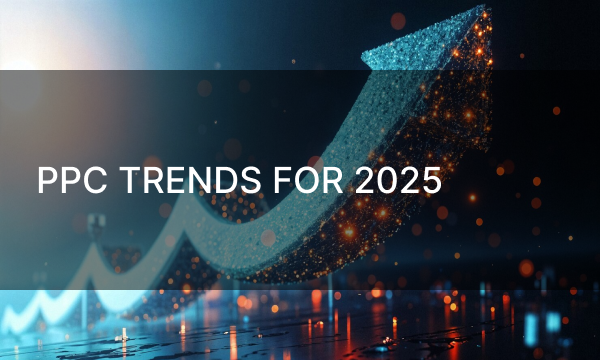Introduction: The Shift AI Brings to Paid Advertising
Paid search advertising is on the verge of a major transformation, driven by the rapid evolution of artificial intelligence. Once a supporting tool, AI is becoming the central engine behind campaign management, handling everything from hyper-personalized ad creation and dynamic audience segmentation to predictive analytics and autonomous optimization. This shift moves advertisers from reactive management toward proactive, data-driven strategies that anticipate user intent and deliver tailored experiences at exactly the right moment. The result: higher conversion rates and more efficient ad spend.
Google describes this transformation as “shortening the path from discovery to decision.” In practice, this means ad budgets are being redirected toward new types of surfaces, far removed from the familiar SERP layouts that once guided optimization. As AI-driven experiences reduce direct website clicks, advertisers face rising competition for attention, higher CPCs, and growing uncertainty around where their money goes. Those who fail to adapt risk being left behind in an increasingly automated landscape.
This article explores the structural change underway in how Google search operates. You’ll learn how the classic “blue links” are being replaced with AI-generated responses that create seamless, conversational user experiences, and how paid ads now appear within or around these responses.
Google’s Vision for AI Search
By moving beyond static lists of links, Google’s AI-powered search aims to create an interactive, conversational experience where users refine their queries and act within one interface. This not only makes information discovery more efficient but also produces clearer intent signals, bringing ads closer to conversion points.
In this integrated environment, ads will become more personalized and contextually relevant, aligning with the user’s ongoing journey. While industries like e-commerce and travel may see improved product visibility and performance, others, such as finance and insurance, face more complex outcomes.
At its core, this is a supply-and-demand challenge. As organic (“free”) clicks decline, advertisers are forced to compete more aggressively for paid visibility, driving up CPCs. The AI-driven search economy is shaping into a more competitive, cost-intensive ecosystem that may permanently redefine the economics of online advertising.
Ads Within AI Journeys
As AI becomes embedded in daily life, advertising is evolving from targeting individuals to integrating directly into AI-driven interactions. The AI itself becomes both the context and the channel for ads.
Future ad auctions may involve bidding not just on demographics or keywords, but on the value of AI attention at a specific moment, for example, a prominent slot in a generative AI response or within a virtual assistant’s recommendation. Ad costs will hinge on how effectively AI delivers messages and how unique or interactive those experiences are.
Traditional ad formats- static banners or standalone videos – will fade in favor of more immersive, context-aware advertising. The challenge will be creating ads that enhance, rather than interrupt, AI interactions. This calls for AI-native creative strategies, built around understanding how AI interprets context, tone, and intent, and doing so ethically.
Competition for visibility will intensify, echoing earlier shifts seen with the rise of product advertising, where larger players consolidated dominance. The conversational nature of AI means that direct “Buy Now” calls to action may feel out of place; success will rely on subtle, dialogue-appropriate messaging that fits naturally into the AI-driven flow.
The Transparency and Measurement Gap
Despite AI’s growing influence, transparency remains a major obstacle. Many AI systems operate as opaque “black boxes,” making it difficult to understand why specific outputs or ad placements occur. This lack of explainability creates challenges in trust, accountability, and effective management.
Even measuring AI performance is complex. Metrics like accuracy or precision reveal only part of the picture, failing to capture fairness, robustness, or unintended social effects. Without consistent frameworks for measuring these dimensions, marketers struggle to assess whether AI systems are performing responsibly or equitably – a gap that complicates both strategy and ethics.
Brand Safety and Trust in AI Overviews
AI-generated summaries promise faster, more direct answers but also introduce serious brand safety risks. Since these summaries are generated automatically, brands can appear alongside misleading, inaccurate, or offensive content, without human editorial control. One misplaced association can harm brand perception and erode trust.
The opacity of AI algorithms compounds the issue. When a brand’s content appears in a problematic context, understanding why (and correcting it) becomes difficult. Unlike traditional ads, where placements can be tightly controlled, AI-generated environments are fluid and unpredictable. What was once a safe channel for search advertising now carries the risks long associated with display media. Regulators are paying close attention, and brands will need new safeguards to protect their integrity in this evolving landscape.
What to Prioritize in AI-Driven Advertising
Rather than chasing every new AI feature, advertisers should focus on using AI to create more personalized, relevant, and ethical customer experiences. Success depends on deeply understanding audience needs and using AI to strengthen – not replace – human connection.
Ethical considerations must remain at the forefront: mitigating bias, protecting data privacy, and maintaining transparency all reinforce trust and long-term brand credibility.
This shift also demands a move away from keyword-centric strategies toward a holistic customer journey mindset. AI thrives on iterative engagement, so advertisers must design campaigns that account for multi-step, evolving interactions. Structured data, schema markup, and optimized product feeds are now essentials, not extras, for ad eligibility in AI environments.
Finally, evaluation must evolve. Traditional last-click metrics like CPA no longer suffice. Mid-funnel indicators, lead quality, conversion velocity, assisted revenue, provide a fuller picture of AI’s contribution. Ads within AI-driven experiences should feel like natural extensions of the user’s journey, not interruptions.
Conclusion
Paid search is undergoing a profound transformation. Manual keyword bidding and static A/B testing are giving way to an intelligent ecosystem where AI orchestrates every aspect of campaign performance. This evolution brings hyper-personalization, efficiency, and a redefined relationship between advertisers, platforms, and users.
AI’s ability to process massive datasets and predict intent in real time is already reshaping workflows – automating tasks that once demanded human labor. From real-time bidding to AI-crafted ad copy, the future of paid search belongs to adaptive, insight-driven systems that augment human creativity.
The key skill for marketers will be interpreting AI insights, guiding machine learning, and shaping compelling narratives that align with algorithmic findings. In this new paradigm, AI doesn’t replace human expertise, it amplifies it. The future of paid search is a partnership between human intuition and machine intelligence, creating smarter, more responsive, and ultimately more human-centered advertising.





